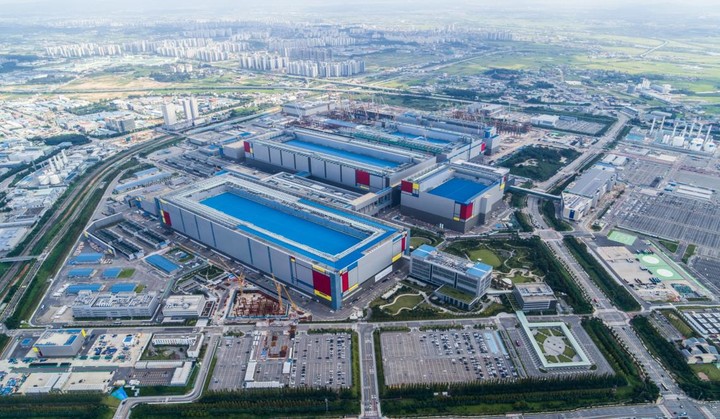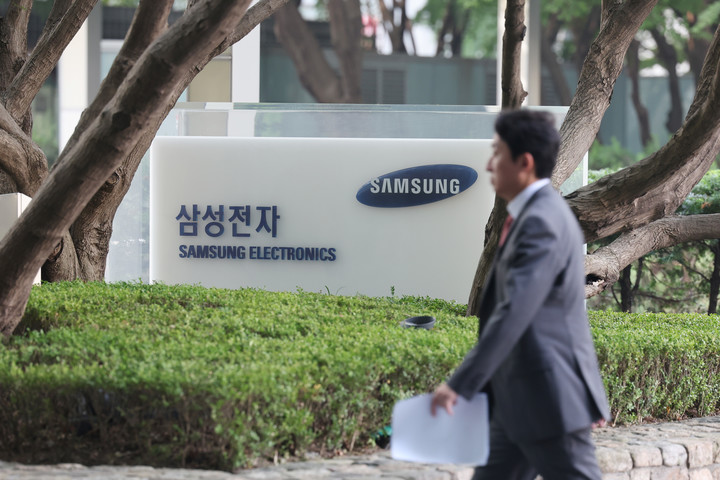Semiconductor Business Weakness and Inventory Write-Downs Drive Significant Decline
Industry Anticipates Second-Half Recovery as Company Refocuses on HBM and Advanced Manufacturing

Samsung Electronics’ operating profit in the second quarter of this year was nearly cut in half amid sustained challenges in its semiconductor segment and a significant inventory write-down.
On July 8, Samsung Electronics announced in a regulatory filing that it posted a consolidated operating profit of KRW 4.6 trillion for Q2 2025, representing a 55.94% decrease compared to the same period the previous year. Revenue amounted to KRW 74 trillion, a slight 0.09% drop from the previous year.
The company attributed this steep decline primarily to the poor performance of its Device Solution (DS) division, which includes its crucial semiconductor operations. Key factors included a weakened competitive position in the high-bandwidth memory (HBM) market, as well as reduced utilization rates in its foundry business.
In its explanatory materials, Samsung Electronics stated, “The DS segment experienced a decrease in profits compared to the previous quarter due to factors such as inventory write-downs and the impact of U.S. sanctions on advanced AI chips.”
The company recorded approximately KRW 1 trillion in inventory valuation losses this quarter. Inventory write-downs refer to accounting for anticipated losses when product values fall and are no longer expected to be sold at original market prices.
Uncharacteristically, Samsung Electronics explained, “The memory division saw a decline in performance owing to one-time expenses like inventory valuation losses.”
The DS division’s struggles were further compounded by diminished competitiveness in the HBM sector. Samsung Electronics has been unable to supply HBM products to Nvidia for over a year and is currently performing quality tests on its improved 12-layer HBM3E products.
Meanwhile, the NAND flash division—which last year posted operating profits in the KRW 1 trillion range—has come under pressure amid declining downstream demand, falling prices, and the impact of new U.S. tariff policies, making deteriorating results unavoidable this year.


Additionally, foundry and System LSI operations within the DS division continued to post losses this quarter, further weighing on overall results.
Despite these challenges, industry analysts and securities experts predict Samsung Electronics will hit its low point in Q2 and begin to recover in the second half of the year.
Forecasts indicate that DS division operating profit could rebound to between KRW 3 trillion and KRW 5 trillion in both the third and fourth quarters. Shipments of HBM to major clients are expected to increase, while foundry and System LSI may benefit from a seasonal demand uptick as well as increased shipments of the in-house application processor, Exynos 2500, narrowing losses.
Samsung Electronics is accelerating efforts to re-enter Nvidia’s supply chain in the second half and plans to expedite mass production of next-generation HBM4 products. In the NAND segment, the company will maintain tight supply control and focus on high value-added products, such as enterprise SSDs.
Looking ahead, the foundry business will intensify its focus on advanced 2-nanometer processes set to begin at year’s end, while also strengthening legacy processes at 28 nanometers and above.
Yangpaeng Kim, a senior researcher at the Korea Institute for Industrial Economics & Trade, commented, “Samsung Electronics’ performance slowdown stems from a complex interplay of China export regulations and the impact of inventory write-downs due to weakened HBM competitiveness. In the second half, reducing inventory risks and acquiring diverse customers should enable performance to improve.”
Samsung Electronics is scheduled to officially announce detailed results for each business segment on July 31.
Note “This article was translated from the original Korean version using AI assistance, and subsequently edited by a native-speaking journalist.”

Photo=Yonhap News
추천 뉴스
- 1 Hyeri Captivates Audiences with Mesmerizing Gaze and Irresistible Smile at Luxury Brand Event Actress Hyeri stole the spotlight with her enchanting gaze and radiant beauty at a prestigious Italian luxury brand event held at The Hyundai Seoul in Yeongdeungpo-gu, Seoul, on July 7.The event was marked by the attendance of several prominent stars, including Hyeri, THE BOYZ member Younghoon, and
- 2 Hong Kong Emerges as Top Family Summer Vacation Destination as Exchange Rate Drops by 11% With the arrival of 2025, Hong Kong is regaining popularity as a premier summer travel destination for families.A recent 11% drop in the Hong Kong dollar's exchange rate compared to the beginning of the year has significantly eased travel costs, drawing the attention of budget-savvy holidaymakers se
- 3 Presidential Office Establishes New Youth Coordinator Position with Blind Recruitment Process The Presidential Office announced on July 7 that it will create a dedicated 'Youth Coordinator' position responsible for improving the lives of young people in South Korea through targeted policy initiatives. The selection process for the role will be conducted through a fair and blind recruitment s
- 4 Ex-President Yoon Faces Re-Arrest as Special Counsel Seeks New Warrant After Four Months Former President Yoon Seok-yeol is once again at a crossroads after just four months since his release, as prosecutors move to have him re-detained.On July 6, the special investigative team led by Special Counsel Cho Eun-seok announced it had requested a detention warrant against former President Yo
- 5 Shinhan Bank Marks 43rd Anniversary with Commitment to Customer-Centric Innovation and Social Responsibility Shinhan Bank commemorated its 43rd anniversary on July 7 with a ceremony focused on reaffirming the founding spirit of the bank and highlighting its ongoing dedication to customer-driven innovation and social responsibility. Over 100 employees were in attendance to mark the occasion and to celebrate
- 6 President Lee Meets Cardinal Yoo Heung-sik, Expresses Hope for Papal Visit and Inter-Korean Dialogue President Lee Jae-myung held a meeting with Cardinal Yoo Heung-sik, who is currently visiting Korea, at the Yongsan Presidential Office on the 7th. During the meeting, they discussed the potential visit of Pope Leo XIV to Korea, particularly in light of the upcoming World Youth Day scheduled to take
- 7 BLACKPINK Returns as a Complete Group, Electrifies 70,000 Fans in First Full-Lineup Concert in Two Years BLACKPINK has made a long-awaited return as a full group, igniting the stadium stage with their signature energy and charisma as they launched their new world tour, "Deadline." On July 6 at Goyang Sports Complex Main Stadium in Gyeonggi Province, the group greeted a sea of fans on the second night o
- 8 Lee Sang-min Shares Emotional Struggles After Failed IVF Attempt on My Little Old Boy On the latest episode of SBS’s variety show My Little Old Boy, broadcaster Lee Sang-min openly shared the emotional process of undergoing in vitro fertilization (IVF) with his wife, who is ten years his junior, as the couple faced a difficult outcome.Aired on July 6, the program followed Lee Sang-mi
- 9 E-1 Championship Coaches Voice Determination Ahead of East Asian Cup Kick-Off Ahead of the East Asian Football Federation (EAFF) E-1 Championship, national teams from Korea, China, Japan, and Hong Kong have ramped up training and preparations, each setting their sights on victory.At an official press conference held at Mir Stadium in Yongin on the 6th, the head coaches and pl
- 10 Hanwha Eagles Clinch First-Half KBO Lead with Home Run Show and Wise's 10th Win The Hanwha Eagles have secured the top spot in the first half of the 2025 KBO League, marking a triumphant milestone for the team. On the afternoon of July 6 at Gocheok Sky Dome, Hanwha overwhelmed the Kiwoom Heroes 10-1 in an away game, sealing their first-half lead regardless of the outcomes in th
